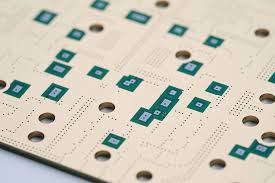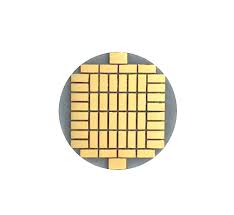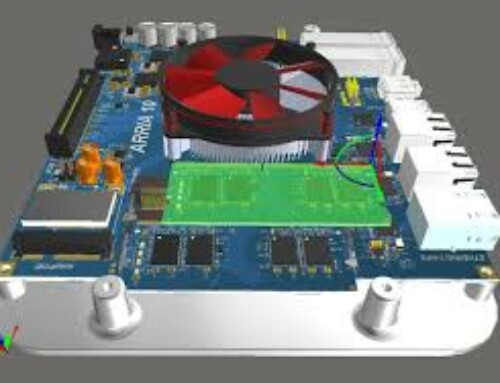Improving Performance and Reliability: Research on Ceramic Printed Circuit Boards
With the rapid development of electronic technology, electronic equipment is increasingly miniaturized, high-performance and multi-functional. In this context, ceramic printed circuit boards (Ceramic Printed Circuit Boards, referred to as ceramic PCBs), as an emerging electronic material, have attracted widespread attention and research. Ceramic materials have excellent physical and chemical properties, allowing ceramic printed circuit boards to show great potential in improving performance and reliability.
Traditional circuit boards usually use organic chips such as FR-4 (fiberglass reinforced epoxy resin) carriers. However, with the further development of electronic devices, traditional circuit boards have shown certain limitations when facing some challenges. First of all, the demand for high-density integration and miniaturization puts higher requirements on the space utilization of circuit boards, while the dimensional stability and high temperature resistance of basic chips are relatively low. Secondly, high-precision and high-speed signal transmission requires source signal loss and better anti-electromagnetic interference capabilities, and the dielectric properties of traditional circuit boards cannot meet these requirements. In addition, some application fields, such as power electronics and automotive electronics in high-temperature environments, place higher requirements on the high-temperature tolerance and reliability of circuit boards.
In this context, ceramic printed circuit boards have critical advantages as a new alternative material. Ceramic materials have excellent high-temperature stability, excellent insulation properties and low dielectric loss, which can meet the requirements of high-density integration and miniaturization. In addition, ceramic materials also have excellent thermal conductivity, which is beneficial to heat dissipation and temperature management, improving electronic equipment. reliability. Therefore, the research and development of ceramic printed circuit boards has become an important direction to improve the performance and reliability of electronic equipment

1. Ceramic materials have key properties in electronic applications
High temperature tolerance:
Ceramic materials have excellent high temperature stability and can maintain their physical and electrical properties in high temperature environments. In contrast, traditional organic hosts are prone to dimensional deformation and performance damage at high temperatures. The ability to withstand higher operating temperatures makes ceramic printed circuit boards more reliable in high temperature applications.
Excellent insulation properties:
Ceramic materials have excellent insulation properties and can effectively prevent current discharge and interference. In contrast, the key key may have higher dielectric and dielectric losses, enabling high-frequency signal transmission and anti-interference. The low dielectric constant and low electrical loss of ceramic materials enable ceramic printed circuit boards to achieve external Signal loss and better signal loss.
Low dielectric loss:
Ceramic materials have low dielectric loss, which means signal accuracy and stability are maintained in high-frequency applications. Lower dielectric loss helps reduce energy loss and signal attenuation during signal transmission, and improves circuit efficiency and performance.
Dimensional stability:
Ceramic materials have considerable dimensional stability under changes in temperature and humidity and are relatively unaffected by environmental factors. This characteristic allows ceramic printed circuit boards to maintain stable electrical connections and performance under complex environmental conditions.
Excellent stability:
Ceramic materials have excellent chemical stability and corrosion resistance, and are not susceptible to chemical substances and moisture monitoring. This enables the ceramic printed circuit board to operate stably for a long time in a queue working environment and improves the reliability of electronic equipment.
In summary, ceramic materials have significant advantages in key properties such as high temperature tolerance, insulation performance, low dielectric loss, dimensional stability and stability. These characteristics make ceramic printed circuit boards an important choice to improve the performance and reliability of electronic devices, and show strong application prospects in electronic applications in various fields.

2. In addition to the manufacturing process, improving the performance and reliability of ceramic printed circuit boards requires a series of strategies.
These strategies include:
Optimize circuit layout:
Design the circuit layout rationally to reduce signal interference and cross-coupling. Use appropriate inter-layer isolation and impedance matching technology to optimize signal transmission effects.
Reduce electromagnetic interference:
Ceramic printed circuit boards should take lightning measures to reduce the electromagnetic impact on surrounding equipment. Lightning glare, lightning layers and ground wire layout can be used to improve anti-interference capabilities.
Improve skateboard performance:
Since ceramic materials have good thermal conductivity, properly designing and strengthening the skateboard structure will help reduce the operating temperature of electronic components and improve overall reliability.
Protective measures:
To protect ceramic printed circuit boards from the effects of humidity, chemical substances and physical damage, enhanced protective measures should be taken, such as anti-corrosion, waterproofing, anti-corrosion, etc.
By comprehensively applying these strategies, the performance and reliability of ceramic printed circuit boards can be further improved to meet the needs of demanding applications in different fields.
4. In addition to the above fields, ceramic printed circuit boards also show potential in many fields such as medical equipment, industrial control, and energy fields.
With the continuous improvement of performance and reliability requirements, the application prospects of ceramic printed circuit boards will be further broadened, providing higher levels of performance and reliability for electronic equipment in various fields.
Reliability verification and testing of ceramic printed circuit boards are important steps to ensure their long-term stability and reliability. Several common methods and standards are discussed below:
Thermal reliability testing:
Thermal reliability testing is a key test method to evaluate the stability and reliability of ceramic printed circuit boards in high-temperature environments. Commonly used test methods include thermal shock testing, high temperature aging testing and temperature cycle testing. These test methods truly simulate the temperature changes in the use environment by exposing the circuit board to different temperature and humidity conditions, and detect the performance changes and failure conditions of the circuit board under thermal stress.
Mechanical Reliability Testing:
Mechanical reliability testing is used to evaluate the performance and reliability of ceramic printed circuit boards under mechanical failures such as vibration, shock, and bending. Commonly used mechanical reliability testing methods include vibration testing, impact testing and bending testing. These test methods can detect structural defects, solder joint reliability and connection performance of circuit boards under mechanical failure.
Electrical performance testing:
Electrical performance testing is an important method to evaluate the electrical performance and reliability of ceramic printed circuit boards. By testing parameters such as resistance, capacitance, dielectric strength, and insulation resistance, the conductive performance, insulation performance, and withstand voltage of the circuit board can be detected. In addition, signal integrity testing and high-precision characteristic testing can also be performed to verify that the circuit board is actually working. performance and reliability at frequency.
Environmental reliability testing:
Environmental reliability testing is used to evaluate the stability and reliability of c ceramic printed circuit boards under different environmental conditions. Commonly used environmental reliability tests include salt spray testing, heat and humidity cycle testing, and chemical substance resistance testing. These test methods can simulate the performance changes and corrosion of circuit boards in environments such as humidity and chemicals.
When conducting reliability verification and testing, relevant standards and specifications are usually referred to. For example, the International Electrotechnical Commission (IEC) has issued a series of standards related to the reliability of electronic products, such as IEC 60068 and IEC 60112. In addition, industry associations and organizations have also developed some reliability testing standards in specific fields, such as automotive industry standards (such as ISO 16750) and aerospace standards (such as MIL-STD-810).
By conducting comprehensive reliability verification and testing and complying with relevant standards and specifications, it is possible to ensure that ceramic printed circuit boards have good stability and reliability in long-term use and improve their application value in various fields.

6.Looking at the research results and application prospects of ceramic printed circuit boards, we can see that it has important advantages in improving performance and reliability. However, some challenges still exist, and future directions require further exploration and development.
Further improvements in manufacturing processes:
Although significant progress has been made in the manufacturing process of ceramic printed circuit boards, room for improvement has been lost. Further research and optimization of manufacturing processes are needed to produce efficiency, reduce costs, and ensure product consistency and consistent reproducibility.
Development of new ceramic materials:
The currently used ceramic materials have achieved good performance, but there is a need to develop new ceramic materials first. The development of new materials can be achieved by improving the formulas of existing materials, exploring new compositions and structural designs, and introducing nanomaterials. The application of new materials may lead to higher performance, wider operating temperature range and power consumption.
Explore a wider range of applications:
Ceramic printed circuit boards have shown potential in fields such as high-frequency communications, power electronics, automotive electronics and aerospace. In the future, its applications in other fields can be further explored, such as medical equipment, energy fields and industrial control. This will provide more opportunities and markets for the development of ceramic printed circuit boards.
Integration and Integration:
As electronic devices continue to evolve, so does the need for smaller, lighter, higher-performance solutions. Therefore, integrating and integrating ceramic printed circuit boards with other advanced technologies and materials, such as flexible electronics technology, three-dimensional packaging technology and new packaging materials, can further expand its application scope.
In general, ceramic printed circuit boards, as an electronic material with excellent performance and reliability, have exciting research results and application prospects. By further improving manufacturing processes, developing new ceramic materials and exploring wider application areas, ceramic printed circuit boardsceramic printed circuit boards will play a more important role in the electronic field and meet growing market demand.
In summary, ceramic printed circuit boards, as an electronic material with excellent performance and reliability, have great potential in improving performance and reliability. It has great potential in terms of high temperature tolerance, insulation properties, low dielectric loss and stability. Advantages in key properties produce materials of interest in the electronics industry.
By optimizing manufacturing processes, developing new ceramic materials and exploring wider application areas, ceramic printed circuit boards are expected to play an important role in the electronics industry. Its applications in high-frequency communications, power electronics, automotive electronics and aerospace have been successful, and it also has huge development potential in medical equipment, energy fields and industrial control.
As technology continues to advance and demand grows, ceramic printed circuit boards will continue to receive attention and gain an important position in the electronics industry. It will provide electronic equipment with a higher level of performance, reliability and stability to meet the continuous growth. Therefore, looking to the future, ceramic printed circuit boards are expected to have an eye-catching and wide range of application prospects in the electronics industry and make a contribution to the development of electronic technology. make important contributions.





